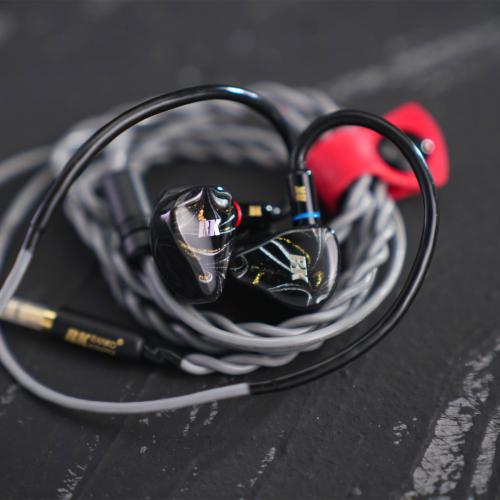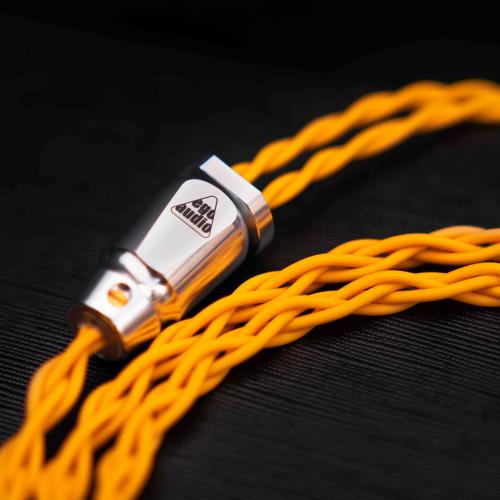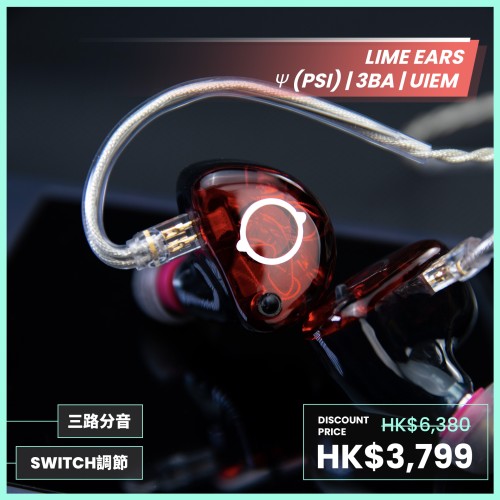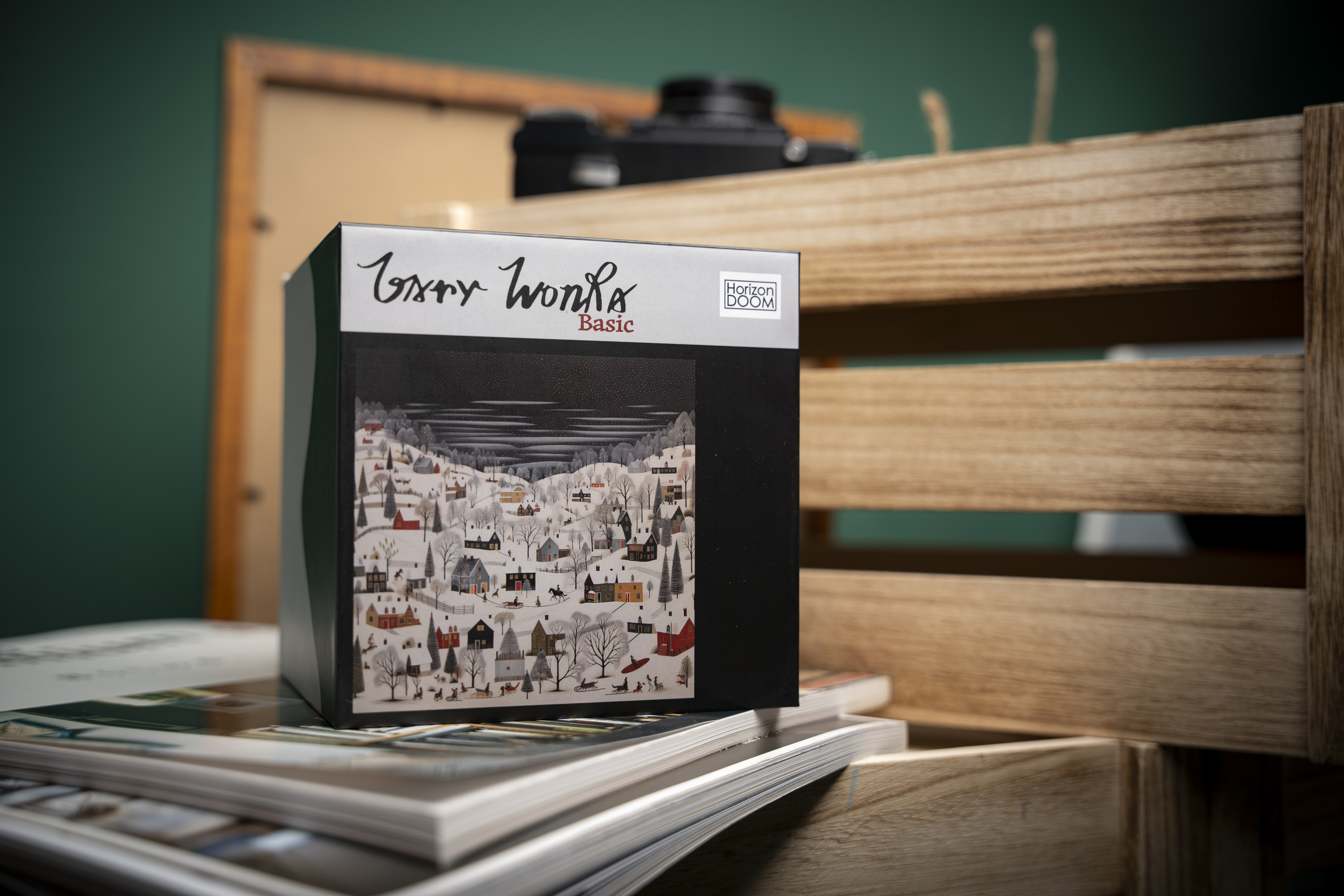
There was once a psychological theory called the "Hierarchy of Needs" which stated that human needs can be divided into five levels, resembling a pyramid. From the basic needs at the bottom to the highest level called "Self-Actualization," which represents the most fulfilling moments in life. The explanation in the book may seem abstract, but the process of achieving self-actualization is relatively straightforward: finding a field where one can break through oneself and unleash their potential, and then working hard to implement it; it is in those moments of breaking free from limitations that one can create a sense of fulfillment and accomplishment. This memory is evoked not only due to the collection of information but also because of the protagonist of this article - Horizon Doom Basic.
The appearance of Horizon Doom is a pleasant surprise, a breath of fresh air. As a Japanese brand, it chose to debut in Hong Kong and mainland China, proudly bearing the label of "Made in Japan." The product has multiple unique features, not just gimmicks but also practical functions, making it competitive. Therefore, after its launch in the local market, more and more people have tried it. It seems that even as a new brand, the entire package has instilled great confidence in the market.
A pair of IEM made of pure silver, featuring unique acoustic design and the top-notch craftsmanship of Japan, when you put them on and the sound starts playing, you immediately feel the taste of happiness associated with self-actualization.
Japanese attention to detail - A refreshing approach to packaging design
The packaging of Basic is quite interesting. It has a square shape and a compact size. The exterior features artistic patterns and designs from GaryWonka studio in Spain, while the minimalist Scandinavian style is evident throughout the unboxing experience. Upon opening the top cover, a pleasant fragrance wafts out, and the contents can be easily seen with the help of a cardboard divider.
Without layers or perfectly positioned compartments, each item in the box occupies a specific spot and is placed randomly. This unorthodox arrangement may seem unfamiliar to local audio enthusiasts, but it is by no means a haphazard design. Doesn't the town map on the outer box provide you with a clue?
Speaking of when I was a child, when I received Christmas gifts and candies from foreign relatives and friends, they were usually not packaged in gift boxes or tin cans. Instead, they were wrapped in transparent gift paper, with different flavors or styles of candies, tied with ribbons. Each package was colorful and thoughtful. Holding them in my hand and playing with them freely, I could spend a whole day just looking at them. This casual and spontaneous style brings the focus back to the essence. Instead of the gifts themselves, I pay more attention to the thoughtfulness of the gift giver.
Similarly, the experience of Basic brings you back to the essence. Each item taken out of the box carries weight and meaning. Think back, out of all the times you've unboxed things, which one left a deep impression on you? How long has it been since you experienced a simple and genuine unboxing like Basic? The IEMs are individually wrapped in two black leather covers and come with three sets of earbuds in different sizes: large, medium, and small. The original silver headphone cable is also included. There is a piece of silver cloth, although the manufacturer claims that Basic's casing has been sprayed with an anti-oxidation coating, over time it may still develop a slight yellowing. Inside the box, there is also a puzzle, featuring the same artwork as the one on the outer box. As you listen to music and solve the puzzle, you can practice patience and forget about the trivialities of life, allowing yourself to relax.
Absorption, diffusion, and flow guidance - 1 take - Fourfold three-element standing wave suppression technology
Horizon Doom does not delve deeply into headphone technology, as if subtly suggesting "pay attention to its sound," but from its appearance and the hints mentioned in its copy, one can still discern some clues, which truly enrich Mr. Kagehiko's acoustic "persona." Despite being a single dynamic driver earphone, the application of acoustic structure is more substantial and refined compared to most new products on the market, generally divided into two forms corresponding to its four-fold tri-element standing wave suppression technology. Carefully observing Basic's acoustic ducts, the conical structure extends into the cavity like an aircraft engine, creating hollowed out areas that form three sets of "braces" and independent reflection spaces. At its deepest, there is a uniquely shaped sound-absorbing plate, showing an impressive level of precision that not only highlights the craftsmanship of the Horizon Doom team, but also serves practical purposes.
For any Hi-Fi enthusiast with a certain level of experience, they would have come across a speaker construction called a "phase cone," which can be found in speakers of different levels in households. It is a cone-shaped metal fixed at the center of the driver diaphragm, designed to reflect the secondary waves produced when the diaphragm vibrates, reducing standing waves and crossover distortion, allowing three-frequency energy to be transmitted smoothly and consistently. The acoustic structure of Basic is largely inspired by this design. Due to size constraints, Basic's phase cone cannot be placed at the center of the driver diaphragm. Instead, it utilizes the direction of the driver and three independent spaces within the duct to divert and guide the sound waves. At the tip of the duct, it creates a reflective effect, enhancing the efficiency of sound wave transmission, eliminating the time differences and compression characteristics brought about by standing waves: in other words, the three frequencies are much cleaner, the sound is not sluggish, and there is less delay.
As for the sound-absorbing panel located deep within (or also known as the front cavity), it serves the purpose of reducing the reflection of sound waves within the cavity. Why is there a need for this? Similar to the situation with the phase cone above, standing waves are formed due to the reflection of sound waves, but this device corresponds not only to the diaphragm, but to the entire earphone space. In home audio systems, one of the most influential factors affecting sound presentation is wall reflections. When the speakers emit sound, the sound waves do not travel in a straight line like a laser, but rather fan out and bounce off your side walls and ceiling, eventually reaching your ears, creating reverb. Because of the time difference (direct sound vs. reflected sound reaching the ears), the combined sound at this point becomes muddy, affecting imaging, depth of the soundstage, and positioning.
So in the Hi-Fi market, there are sound-absorbing panels, diffusion panels, used to fine-tune the acoustical reflections in the listening space, absorbing a certain amount of reverberation to achieve a better balance of spatiality and clarity. Enthusiasts might even set up a dedicated Hi-Fi room to enjoy a more consistent and controllable listening environment. In the case of in-ear headphones, the acoustic environment is narrow, the reflections are more immediate, and the impact is greater. Therefore, this sound-absorbing panel in Basic holds significant importance—it not only absorbs excessive mid-low frequency reverb, but also forms an acoustic structure of coexisting absorption and diffusion with the pure silver cavity.
During the development of Basic, Mr. Kagehiko experimented with various materials such as copper, silver, as well as carbon fiber, wood, and ultimately chose pure silver to craft the cavity. One consideration for this decision is precisely the specific properties of silver when sound is reflected: the entire cavity, apart from the smooth polished position for the ear tips, including the entire acoustic space, retains a natural graininess. In fact, these grains serve a role akin to diffusion panels, balancing the proportion of reverberant sound to direct sound, achieving a wonderful balance.
Phase cone, sound-absorbing panel, diffusion panel - exactly! Basic is a pair of in-ear monitor developed with a home audio perspective in mind! The entire acoustic structure is built around the sound-producing unit: Basic uses a diamond composite diaphragm dynamic driver, a special unit developed by Mr. Kagehiko over nearly a year. It inherently possesses the rigidity brought about by the diamond material and excels in sound texture reproduction and elasticity characteristic of composite materials. Coupled with the vent located on the side of the body and next to the duct, the coloration of the sound is made more prominent.
Great sense of space!
The use of pure silver to craft the cavity might lead many to have a preconceived notion that Basic's sound would be clean, bright, and even cold like silver jewelry. However, Mr. Kagehiko's years of research and development experience stand as proof against such assumptions: Basic's energy does not impose a strong sense of pressure, and in places of high pressure in the treble, there is always an appropriate amount of air and space to allow the sound to expand and then dissipate. The entire process is as smooth as silk, making the listening experience more comfortable and accommodating of more nuanced details within the soundstage.
Basic excels at fundamental aspects, much like a top-tier camera tripod, able to balance not only on the vertical and horizontal axes, but also handle rotation, tilting, and vertical movement. For instance, in live recordings, the drum sounds and the audience's cheers and applause are distributed throughout the space without any element standing out and affecting the spatial arrangement. The noticeable soundstage depth gives each sound its dedicated space to resonate. This extends to the dynamic driver performance of Basic. In comparison with headphones of similar configuration and price, Basic's bass is the most natural. While the sense of quantity and impact may not be as strong or intense as other headphones, the distinct layering and the varying strength of sounds from near to far truly elevate the listening experience, especially for rock music from the 80s and 90s. Similarly, while listening to ethereal and wide-ranging vocalists such as Loren Allred, the reverberation of their voice across the left, right, up, and down channels creates an enticing effect that captivates every audiophile.
Basic's most "silver-like" trait lies in its revealing level of detail. For instance, in a song by Loren Allred, even the faint sounds of piano key rebounds echoing from the body of the piano to the support microphone are discernible. Though subtle, the rich woody resonance can also be appreciated. Just like silver, when applied in the right context, it can balance thickness and transparency with equal finesse.
For those accustomed to dynamic driver and balanced armature headphones, Basic's dynamic demonstration may not feel robust enough. In reality, Basic is not lacking in dynamic prowess, but due to its highly integrated tuning, you may not distinctly notice its smooth and agile variations in sound. Everything feels natural, without deliberate emphasis.
Basic's mature tuning exudes a sense of effortlessness, with the most noteworthy aspect being the experience of spatial sound effects. Thanks to the ample space left within the sound, the sound feels relaxed, exhibiting a natural and three-dimensional quality reminiscent of a two-channel setup—this is Basic's greatest strength. You won't encounter this level of ease and refreshment in other headphones; it's as invigorating as a sip of cool, clear water.
Finally, here are some recommendations for pairing. The original cable performs quite well, so if budget is a consideration, it's advisable to first choose a sufficiently powerful player because with an underpowered source, Basic's sound may become hollow and the spatial dimension may flatten. Additionally, consider the synergy between the sound signature and the cable. Here's one more detail to note: Basic's pin jack is two-tiered, offering excellent compatibility and stability. The IEMs themselves are sensitive to cable differences, so don't overlook the potential of this outstanding pair of IEMs!



















-500x500w.jpeg)









































22 Comment(s)
Greetings! Very helpful advice in this particular post! It is the little changes that will make the most important changes. Thanks for sharing!
Wow! This blog looks exactly like my old one! It's on a completely different topic but it has pretty much the same page layout and design. Outstanding choice of colors!
Wow, this paragraph is pleasant, my younger sister is analyzing these kinds of things, thus I am going to let know her.
I love what you guys tend to be up too. This type of clever work and coverage! Keep up the excellent works guys I've incorporated you guys to my blogroll.
I’m not that much of a online reader to be honest but your blogs really nice, keep it up! I'll go ahead and bookmark your site to come back in the future. All the best
Início the formatting process.
Greetings! Very helpful advice in this particular post! It’s the little changes that will make the most important changes. Thanks for sharing!
Every weekend i used to go to see this site, because i wish for enjoyment, as this this web site conations in fact fastidious funny information too.
Excellent blog right here! Also your website loads up very fast! What host are you the use of? Can I get your affiliate hyperlink in your host? I wish my site loaded up as quickly as yours lol
Hey there! I've been reading your website for a long time now and finally got the bravery to go ahead and give you a shout out from Houston Texas! Just wanted to mention keep up the excellent work!
I’ll immediately grab your rss feed as I can not in finding your email subscription link or e-newsletter service. Do you have any? Kindly permit me recognise so that I could subscribe. Thanks.
Hey there, You've done an excellent job. I'll definitely digg it and personally suggest to my friends. I'm sure they'll be benefited from this site.
Ahaa, its fastidious conversation about this post here at this webpage, I have read all that, so at this time me also commenting at this place.
Way cool! Some extremely valid points! I appreciate you writing this post plus the rest of the website is also very good.
Very great post. I simply stumbled upon your blog and wished to say that I have really enjoyed browsing your blog posts. In any case I'll be subscribing for your rss feed and I hope you write once more soon!
I’ll right away take hold of your rss feed as I can not in finding your email subscription link or newsletter service. Do you’ve any? Kindly allow me realize in order that I may just subscribe. Thanks.
I'll immediately seize your rss feed as I can not to find your email subscription hyperlink or newsletter service. Do you have any? Please let me recognize in order that I may just subscribe. Thanks.
There is definately a lot to know about this issue. I really like all of the points you've made.
Ahaa, its good conversation about this paragraph at this place at this blog, I have read all that, so at this time me also commenting here.
Wow, this piece of writing is good, my sister is analyzing these kinds of things, thus I am going to convey her.
I really like what you guys tend to be up too. This type of clever work and reporting! Keep up the excellent works guys I've included you guys to my personal blogroll.
I’ll immediately grasp your rss feed as I can’t to find your e-mail subscription hyperlink or e-newsletter service. Do you have any? Kindly allow me realize in order that I may just subscribe. Thanks.
Leave a Comment